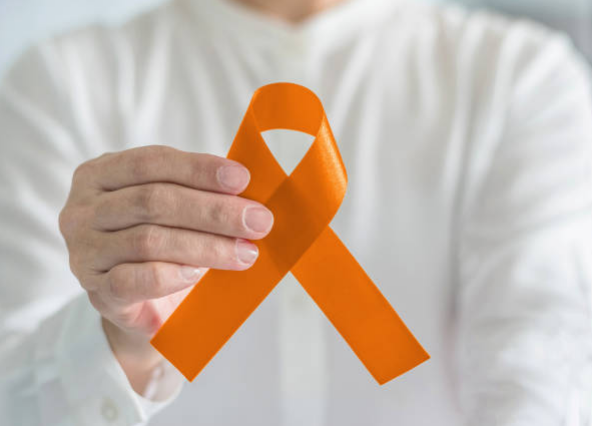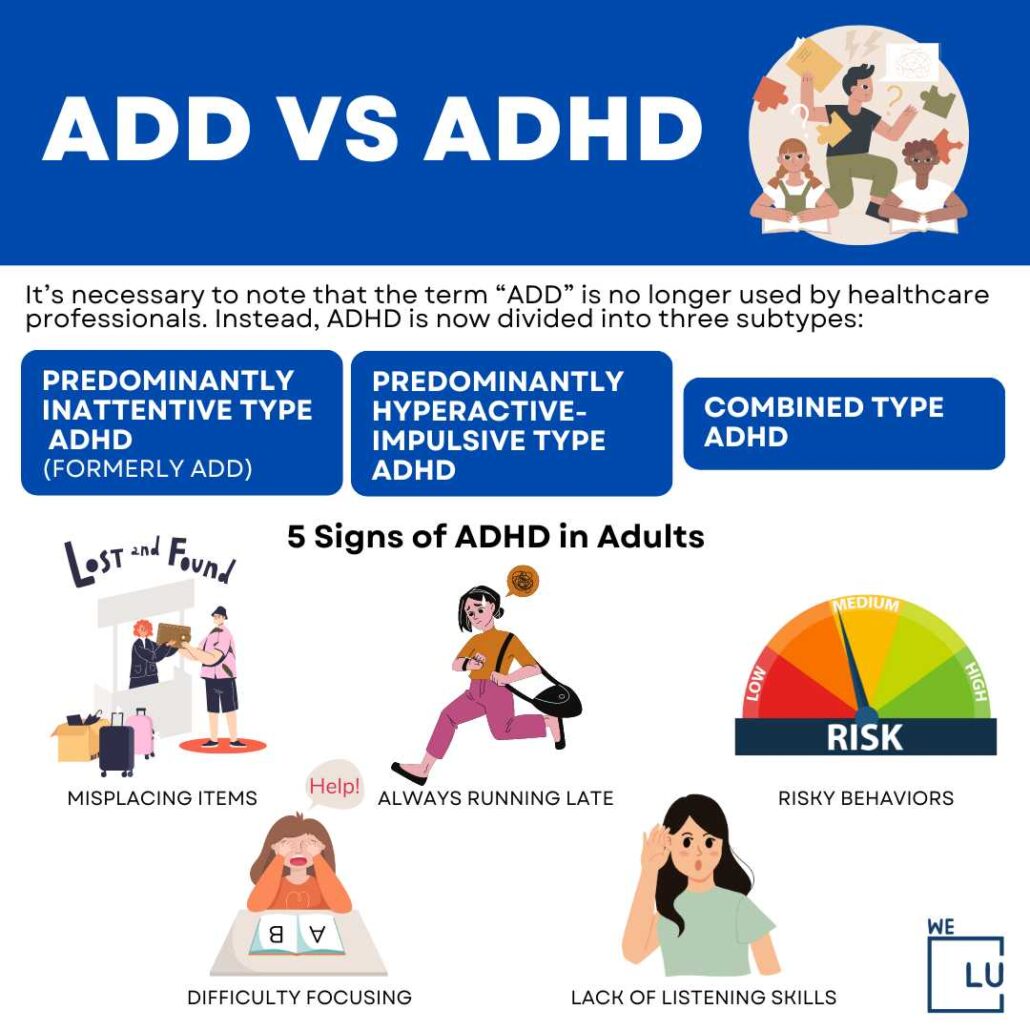ADHD Awareness Month
ADHD Awareness Month, observed annually in October, provides an invaluable opportunity to bring attention to one of the most prevalent neurodevelopmental disorders. Attention-deficit/hyperactivity disorder (ADHD) is a complex condition that impacts millions worldwide, with far-reaching effects on their daily lives, education, relationships, and overall well-being.
During this dedicated month, organizations, healthcare professionals, advocates, and communities come together to increase understanding, challenge misconceptions, and promote support for those with ADHD. It is a time to raise awareness, share knowledge, and foster compassion for individuals with ADHD and their families and caregivers.
This article aims to delve into the significance of ADHD Awareness Month and the critical importance of addressing this condition in our society. By exploring the challenges individuals face with ADHD, highlighting the latest research, and highlighting the impact on various aspects of life, we hope to create a greater understanding of the condition and the necessity for increased support and resources.
ADHD Awareness Ribbon
The ADHD Awareness Ribbon is a powerful symbol representing the collective effort to raise awareness and understanding of ADHD. Typically adorned in vibrant orange, the ribbon signifies solidarity, support, and compassion for individuals affected by ADHD. By wearing or displaying the ribbon, advocates and allies express their commitment to promoting awareness, education, and acceptance of this neurodevelopmental condition.
The ribbon serves as a reminder to engage in open dialogue, challenge stigmas, and create a more inclusive society that recognizes the unique strengths and challenges of individuals with ADHD. It visualizes the ongoing movement to empower those with ADHD, advocating for improved resources, access to proper diagnosis and treatment, and fostering an environment that encourages their success and well-being.


Skip To:
Learn More:
Get Help. Get Better. Get Your Life Back.
Searching for Accredited Dual Diagnosis Mental Health Centers Near You?
Even if therapy failed previously, or are in the middle of a difficult crisis, we stand ready to support you. Our trusted behavioral health specialists will not give up on you. When you feel ready or just want someone to speak to about counseling alternatives to change your life call us. Even if we cannot assist you, we will lead you to wherever you can get support. There is no obligation. Call our hotline today.
FREE 24/7 Dual Diagnosis Mental Health Services HotlineADHD Fact Sheet
Prevalence: ADHD is one of the most common neurodevelopmental disorders, affecting approximately 5-10% of children and 2-5% of adults worldwide. It is more commonly diagnosed in males than females.
Core Symptoms: The core symptoms of ADHD include inattention, hyperactivity, and impulsivity. Individuals with ADHD may have difficulty sustaining attention, organizing tasks, following instructions, sitting still, and controlling impulses.
ADHD is categorized into three subtypes:
a. Predominantly Inattentive Presentation: Primarily characterized by difficulties with attention and organization.
b. Predominantly Hyperactive-Impulsive Presentation: Primarily characterized by hyperactivity and impulsivity.
c. Combined Presentation: Displays symptoms of both inattention and hyperactivity-impulsivity.
Diagnosis of ADHD: This involves a comprehensive evaluation, including interviews with the individual, parents (for children), and teachers or other relevant observers. The Diagnostic and Statistical Manual of Mental Disorders (DSM-5) criteria are commonly used for diagnosis.
Long-Term Outlook: With appropriate diagnosis, treatment, and support, individuals with ADHD can lead fulfilling lives. Early intervention and ongoing management can significantly reduce the impact of symptoms and improve overall functioning.
Co-occurring Conditions: ADHD often coexists with other conditions such as learning disabilities, anxiety disorders, depression, oppositional defiant disorder (ODD), and conduct disorder (CD). These comorbidities can further complicate diagnosis and treatment.
ADHD Statistics
Attention Deficit Hyperactivity Disorder (ADHD) is a neurological condition affecting millions worldwide. While it has gained increasing recognition over the years, the prevalence and impact of ADHD remain substantial. Delving into the statistics provides us with a clearer picture of the scope of this condition, its demographic patterns, and the challenges it poses to individuals, families, and communities.
- Prevalence Rates: ADHD affects 5-10% of children and 2-5% of adults in the US, with varying rates worldwide (1-20%).
- Gender Distribution: Historically seen more in males, ADHD impacts all genders, sometimes differently.
- Age-related Patterns: ADHD persists into adulthood for many, presenting distinct challenges in education, work, and relationships.
- Comorbidity: ADHD often coexists with anxiety, depression, and learning disabilities.
- Socio-economic Implications: ADHD entails higher healthcare and education costs, affecting families and individuals.
8.7 Million
In 2019, the number of visits to physician offices with attention deficit disorder as the primary diagnosis was 8.7 million.
Source: NIMH
9.5%
Approximately 9.5% of American adults, ages 18 and over, will suffer from a depressive illness (major depression, bipolar disorder, or dysthymia) each year.
Source: NIMH
70-80%
The heritability of ADHD, estimated to be around 70-80%, further supports the notion that genetic factors play a substantial role in its development.
Source: NIMH
When is ADHD Awareness Month?
ADHD Awareness Month is observed annually in October. Throughout the month, various organizations, advocates, and communities come together to raise awareness about attention deficit/hyperactivity disorder (ADHD), promote understanding, and advocate for support and resources for individuals with ADHD. It is a dedicated time to educate the public, challenge stigmas, and foster a more inclusive and empathetic environment for those with ADHD and their families.


End the Emotional Pain. Get Your Life Back.
Feeling Depressed, Anxious or Struggling with Mental Health Illness? Get Safe Comfortable Mental Health Dual Diagnosis High-Quality Therapy From Counselors That Care. Begin Your Recovery Now.
Hotline (855) 940-6125The Importance of ADHD Awareness
ADHD (Attention-Deficit/Hyperactivity Disorder) awareness holds significant value in today’s society. This awareness is crucial for several reasons:
- Reducing Stigma: Raising awareness about ADHD helps combat the stigma associated with the disorder. Many individuals with ADHD face misconceptions, judgment, and negative labeling. By fostering understanding, we can create a more inclusive and supportive environment.
- Early Identification and Intervention: Increased awareness enables early identification of ADHD in children and adults. Early intervention, such as therapy, educational support, and medication, can significantly improve individuals’ quality of life and academic or professional achievements.
- Improved Treatment: When more people understand ADHD, healthcare providers can offer better-informed diagnoses and treatment plans. This leads to more effective management of symptoms, helping individuals reach their potential and improve their overall well-being.
- Enhanced Empathy: Knowledge about the challenges individuals face with ADHD fosters empathy and compassion among family members, peers, educators, employers, and society. This understanding promotes patience and provides a more accommodating environment.
- Educational and Workplace Accommodations: With awareness comes the realization that individuals with ADHD often require specific accommodations to succeed in educational and professional settings. These accommodations can include flexible learning methods, extended deadlines, and other adjustments that cater to their unique needs.
- Promotion of Research: A society that values ADHD awareness is more likely to support research initiatives to understand better the disorder’s causes, mechanisms, and potential treatments. This research can lead to groundbreaking advancements in ADHD management.
- Fostering Support Networks: Awareness initiatives unite individuals with ADHD, their families, and supporters. These networks provide a platform for sharing experiences, coping strategies, and advice, creating a strong community.
- Preventing Unnecessary Suffering: Without awareness, many individuals might struggle with undiagnosed ADHD, leading to unnecessary challenges in various aspects of life. Raising awareness ensures that those in need receive the proper support and resources.
- Advocacy and Policy Changes: A well-informed public is more likely to advocate for policy changes that benefit individuals with ADHD, such as improved access to healthcare, education, and workplace accommodations.
- Holistic Understanding: ADHD awareness promotes a more holistic understanding of neurodiversity. It helps society appreciate the unique strengths and perspectives that individuals with ADHD bring to various fields, fostering innovation and creativity.
In conclusion, ADHD awareness is essential for fostering understanding, empathy, and support for individuals living with the disorder. By increasing awareness, we can collectively work toward creating an inclusive and accommodating environment that enables individuals with ADHD to thrive and contribute to society in meaningful ways.
First-class Facilities & Amenities
World-class High-Quality Mental Health Services & Behavioral Health Substance Abuse Treatment
Rehab Centers TourRenowned Mental Health Centers. Serene Private Facilities. Inpatient Rehab Programs Vary.
Mental Health Helpline (855) 940-6125Proven recovery success experience, backed by a Team w/ History of:
15+
Years of Unified Experience
100s
5-Star Reviews Across Our Centers
10K
Recovery Successes
- Comprehensive Dual-Diagnosis Treatment
- Complimentary Family & Alumni Programs
- Coaching, Recovery & Development Events
- Comfortable Onsite Medical Detox Center
ADHD Awareness Symbol

The ADHD awareness symbol commonly used to represent ADHD awareness is a variation of the ADHD logo. The symbol consists of a three-dimensional brain with puzzle pieces coming together to form the brain shape. The puzzle pieces represent the complexity and diversity of ADHD, highlighting that each individual with ADHD is unique and may experience the condition differently. The symbol aims to raise ADHD awareness, spark conversations, and promote understanding of ADHD to reduce stigma and support those affected by the condition. It serves as a visual reminder that ADHD is a valid and crucial topic of discussion and that individuals with ADHD deserve understanding, acceptance, and appropriate resources for their well-being and success.
World-class, Accredited, 5-Star Reviewed, Effective Mental Health Dual Diagnosis Programs. Complete Integrated Inpatient Rehab with Free Post Discharge Therapy Planning.
CALL (855) 940-6125End the Emotional Pain Rollercoaster. Gain Stability & Happiness Through Recovery Treatment. Start Mental Health Counseling Today. Get Free No-obligation Guidance by Behaviroal Health Specialists Who Understand Mental Health Recovery.
ADHD Spatial Awareness
Spatial awareness refers to an individual’s ability to perceive and understand their physical surroundings with themselves and other objects. In the context of ADHD (Attention-Deficit/Hyperactivity Disorder), spatial awareness can be impacted in various ways. Individuals with ADHD might experience challenges in this area, affecting their daily lives and interactions. Here’s a closer look at ADHD and its connection to spatial awareness:

- Difficulty with Organization: People with ADHD often struggle with organization and time management. This can extend to their physical environment, leading to cluttered spaces and difficulty in maintaining an organized layout.
- Impulsivity: Impulsivity is a common trait in ADHD. It can lead to impulsive actions, such as moving objects around without considering the consequences or impact on the overall arrangement.
- Trouble with Directionality: Individuals with ADHD might find it challenging to navigate through physical spaces. They might have difficulty following directions, understanding maps, or estimating distances accurately.
- Messy Workspaces: Due to challenges in maintaining focus and organization, individuals with ADHD might have messy workspaces that impact their productivity and ability to locate necessary items.
- Spatial Perception: Spatial perception involves understanding the relationships between objects and their spatial orientation. ADHD can sometimes affect this perception, making it harder to judge distances or sizes accurately.
- Executive Functioning: Executive functions, including planning and organization, are often impaired in individuals with ADHD. These functions play a crucial role in spatial awareness and the ability to arrange items in a logical order.
- Multitasking Challenges: Individuals with ADHD might struggle with multitasking and switching between tasks. This can extend to managing different aspects of their physical environment simultaneously.
- Visual Distractions: People with ADHD tend to be more sensitive to visual stimuli, which can lead to distractions and difficulties in focusing on specific spatial elements.
- Impaired Attention to Detail: ADHD can affect attention to detail, making it harder to notice subtle changes or differences in the environment.
- Impact on Learning: In educational settings, difficulties with spatial awareness can affect tasks like reading maps, understanding geometry, and following instructions that involve spatial relationships.
Despite these challenges, it’s essential to note that individuals with ADHD also possess unique strengths. They might excel in creative tasks that involve thinking outside the box, problem-solving, and approaching spatial tasks from unconventional angles.
Awareness of how ADHD impacts spatial awareness can lead to more targeted interventions and support. Educators, parents, and individuals with ADHD themselves can work together to develop strategies for improving spatial organization, minimizing distractions, and enhancing overall spatial awareness skills.
Experience Transformative Recovery at the We Level Up Treatment Center.
See our authentic success stories. Get inspired. Get the help you deserve.



Start a New Life
Begin with a free call to a behavioral health treatment advisor. Learn more about our dual-diagnosis programs. The We Level Up treatment center network delivers recovery programs that vary by each treatment facility. Call to learn more.
- Personalized Care
- Caring Accountable Staff
- World-class Amenities
- Licensed & Accredited
- Renowned w/ 5-Star Reviews
We’ll Call You
Popular ADHD Awareness Month FAQs
-
What is the color for ADHD awareness?
The color commonly associated with ADHD awareness is orange. The vibrant shade of orange is used to symbolize the energy, creativity, and potential of individuals with ADHD.
It represents the call to action to raise awareness, promote understanding, and support those affected by ADHD. The color orange is often used in awareness campaigns, ribbons, and other materials to represent ADHD visually and show solidarity with individuals with the condition. -
When is ADHD awareness day?
ADHD Awareness Day, or ADHD Awareness Week, has no fixed or universally recognized date. Organizations and communities may choose different days or weeks to observe and raise awareness about ADHD. It is common for ADHD Awareness Day or Week to occur within October, recognized as ADHD Awareness Month. However, specific dates may vary yearly and across different regions or countries. It is advisable to stay updated with local ADHD advocacy groups, healthcare organizations, or national calendars to determine the specific date of ADHD Awareness Day or Week in your area.
8 Steps & Tips for Maintaining Your Mental Wellbeing Informative Video
Video Script
We at We Level Up FL are dedicated to personalized mental health services tailored to each person’s unique needs. Our experienced team collaborates closely with clients to create therapy programs that address their challenges and align with their goals. With empathy and support, we empower individuals to take an active role in their mental health journey by providing tools and strategies. We encourage exploration, self-discovery, and growth in a safe and nurturing environment. We understand that everyone is different, so we listen attentively and develop customized therapy plans based on individual concerns, strengths, and aspirations.
Search Drug & Alcohol Rehab / Detox & Mental Health ADHD Awareness Month. The Importance of ADHD Awareness. Topics & Resources
Sources
[1] What is ADHD? | CDC Examining ADD vs ADHD
[2] NIMH » Mental Illness (nih.gov) ADD vs ADHD Review
[3] NIMH » Attention-Deficit/Hyperactivity Disorder (ADHD) (nih.gov)
[4] Attention Deficit Hyperactivity Disorder – StatPearls – NCBI Bookshelf (nih.gov) ADD vs ADHD Adults Review.
[5] ADHD: Reviewing the Causes and Evaluating Solutions – PMC (nih.gov) ADD vs ADHD in Adults Causes.
[6] What is mental health? Evidence towards a new definition from a mixed methods multidisciplinary, international survey – PMC (nih.gov) ADD vs ADHD Symptoms
[7] COMMON MENTAL HEALTH DISORDERS – Common Mental Health Disorders – NCBI Bookshelf (nih.gov) ADD vs ADHD in Female Adults Learn More: ADHD Combined Type
[8] About Mental Health (cdc.gov)
[9] Information about Mental Illness and the Brain – NIH Curriculum Supplement Series – NCBI Bookshelf
[10] Effective Mood And Personality Disorder Treatment (welevelupnj.com)